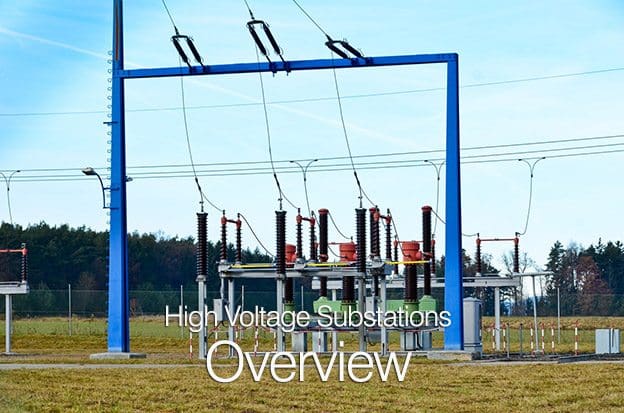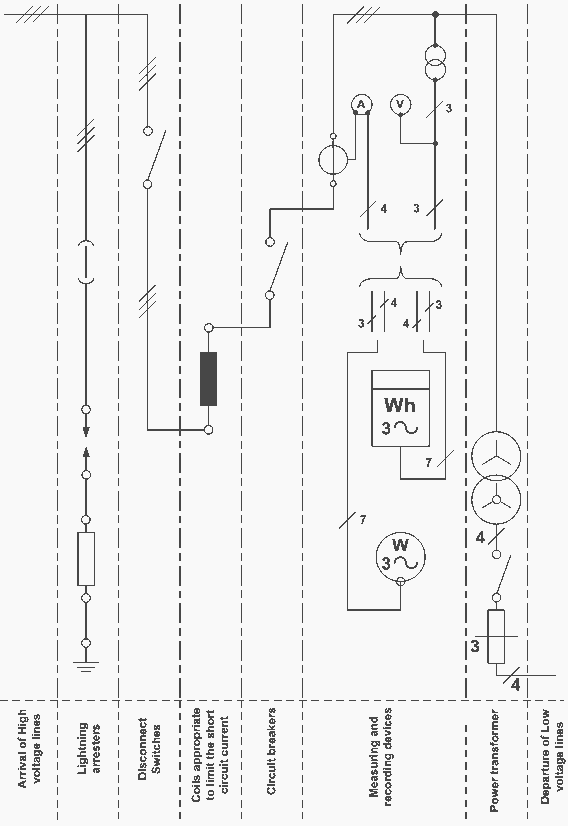
High Voltage Substations Overview (part 2)
Continued from first part: High Voltage Substations Overview (part 1)
Distribution Substations
Transformers are used for the transformation of high and medium voltage to low voltage, flanked by specific protective devices and control systems, which constitute the low voltage distribution substations.
A distribution substation, is characterized by the apparent power of the transformer and whether it is aerial, terrestrial or underground.
The indoor substations (terrestrial or underground), are manufactured in specific areas to ensure waterproofing and adequate ventilation. Among the equipment of high and low voltage, special protective grids (cells) shall be inserted and the transformer is protected by a special cover.
The arrival and departure of electric lines may be:
- Aerial (with bare conductors) or
- Underground (with reinforced cables)
The following example refers to a terrestrial distribution station:
1. Floor plan and incision of a terrestrial distribution substation

Floor plan of a terrestrial distribution substation

Incision of a terrestrial distribution substation
2. Single line schematic arrangement

Single line schematic arrangement of power substation
3. Analytical (three-pole) schematic diagram

Analytical (three-pole) schematic diagram of distributive power substation
High Voltage Substation At Rockville Indiana (VIDEO)
Cant see this video? Click here to watch it on Youtube.
References:
- SIEMENS Substations Guide
- Andreas Goutis, ‘Electrical drawing, Part 1’